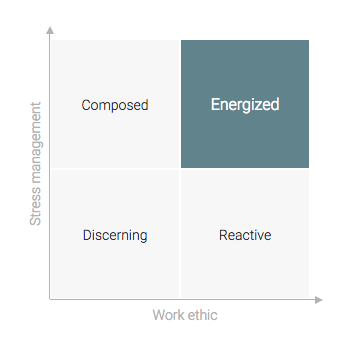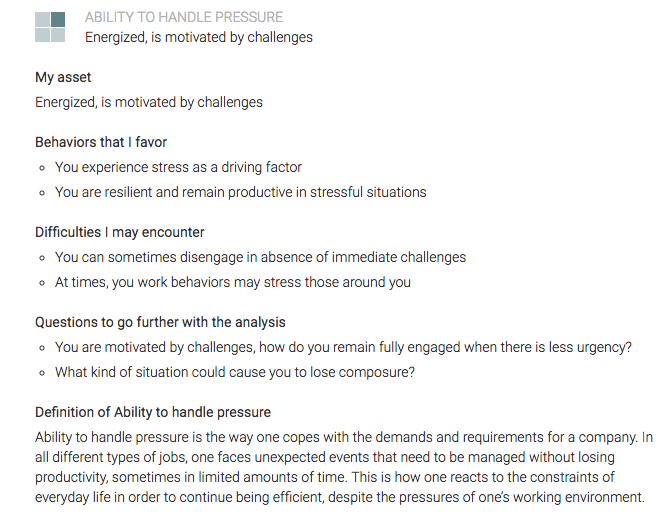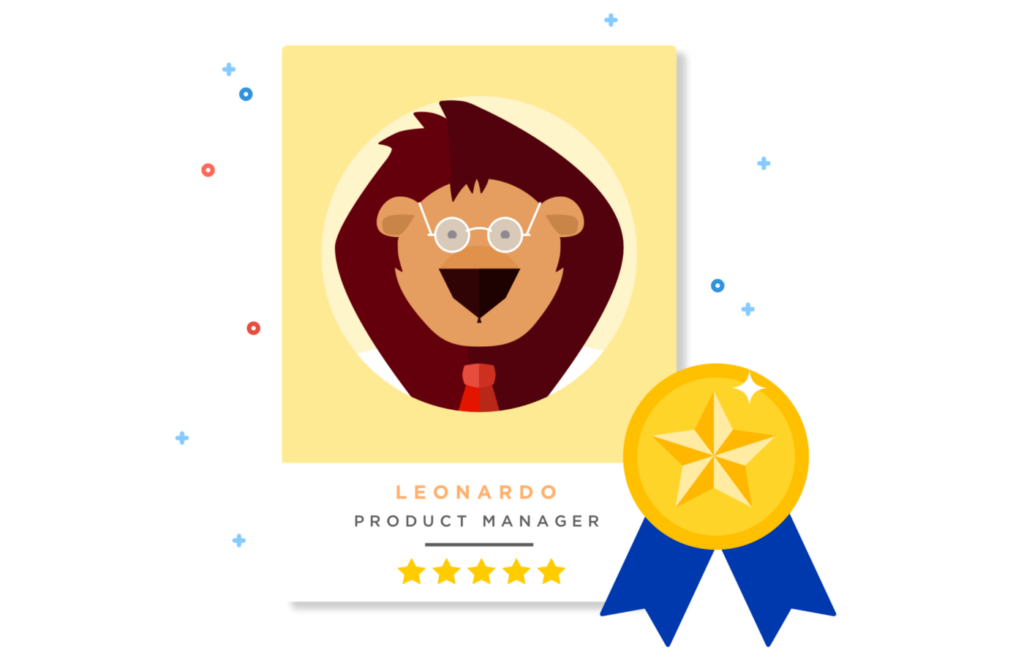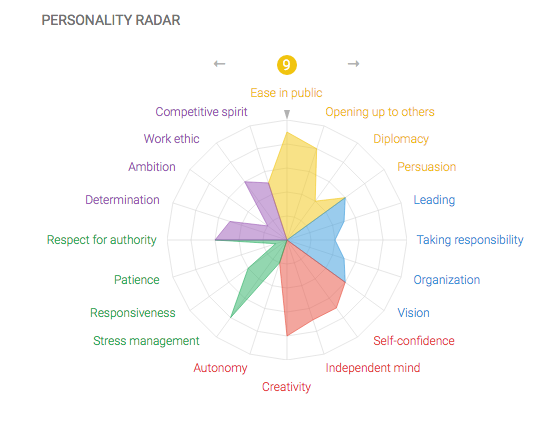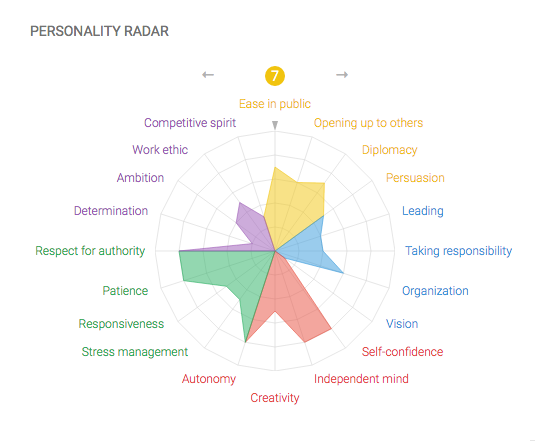Leveraging Motivation and Engagement and Navigate Change

In response to an ever-evolving economic environment, companies undergoing institutional change look to leverage the power of employee engagement. However, true employee engagement cannot be imposed, and HR professionals must establish an internal policy of valuing employees before asking them to serve the company’s interests. According to a 2018 CXP survey (1), HR professionals are facing many additional challenges in their role, such as HR quality of service, data reliability, regulatory compliance and administrative productivity. In fact, HR professionals need to have a reliable HR service before tackling the commitment to business transformation through engagement. This is paradoxical in a rapidly changing world, where it is necessary to be agile and where employee engagement is the key to success. This may come as a surprise, the notion of engagement appeared a while back in the 1980s, when companies understood that employee engagement provided a definite competitive advantage (2); yet a lot of work is still to be done to achieve that ultimate goal.
Engagement from a Motivation Perspective
It is not easy to engage employees to serve the interests of their respective organizations. They must first motivate them. Since motivation is intrinsic to each individual and is correlated to their own values and personality, to grow a business, managers need to consider each team’s culture as a unique set of personalities and motivations. It is only by doing so that they can foster engagement and allow the organizational change to happen (3).
Engaging People During Times of Change
Engaging individuals requires a clear definition of the change expected for the working teams, a simple explanation of intent and a convincing argument for change. Managers must also give some elements on the behavior expected of teams and a reasonable timetable. Engagement depends heavily on the relationships between managers and their teams, during times of change it’s important for managers to focus on these relationships to achieve desired results. In doing so, it’s necessary to revisit management methods. For success it’s found that managers must be able to listen, be empathetic, honest and transparent towards their teams (4).
Becoming Human Centric
Companies are increasingly focusing on the individual’s place in the collective and are developing “symmetry of care,” i.e. they are making the quality of the relationship with their employees equal to the one they maintain with their customers. This concept, which appeared in 2007 in the book “Du management au marketing des services” by Benoît Meyronin and Charles Ditandy, is one of the levers of any transformation process. Vineet Nayar’s global success book “People First, Customers Second” goes further by putting employees before customers and is a global success. He advocates management through trust, because according to him, operational employees carry the value of a company. In the front line with customers, they are the ones who bring the real added value because they are willing to create tailor-made services or products capable of meeting the needs or challenges of the market.
In short, the agile transformation of a company takes its momentum from the revolution in managerial methods and leads to cultural changes that value the entire social body.
Sources:
- Employee Engagement and Change Management 1,Dr. C. Swarnalatha , 2,T.S. Prasanna,1,Professor & Head, Department of Management Studies, ANNA UNIVERSITY, 2013.
- Eight best practices of change : engagement, John Quereto, Expresswork,, August 8th, 2017.
- Employee Engagement and Organizational Change, Stavros Georgiades, Frederick University, January 2015.
Leverage Soft Skills to Accelerate Employee Training

According to the Organization for Economic Co-operation and Development (OECD) figures, just under one-third of French people from 25 to 64 attend work-related training each year. Compared against research showing that 32% of jobs will change with technological progress and 14% risk being automated, this shift may cause concern for employers as they look to remain competitive and sustain business in the future. For employers, training will become crucial to address organizational skill gaps with the introduction of new technologies. From the employee perspective, the 2017 Cegos Barometer shows that, while 99% of French employees believe it is important to train throughout life, only 28% of them consider vocational training to be relevant for companies (Institut YouGov study).
Develop Strategic Social Skills
With the reality of declining employee engagement and increasing turnover, a direct consequences of dissatisfaction with professional training, companies must take the lead in developing the social and situational skills that will ensure their success in a changing environment.
Although the workplace is changing to be increasingly digital, this doesn’t limit employers to “hard skills” but also opens the door for “soft skills” training, which provides long term personal and professional development for employees. In a recent survey conducted by RegionJobs, 82% of the 6,790 respondents (324 recruiters and 6466 candidates) voted that life skills are the most important recruitment criteria. This finding was supported by a study completed by the Employment Guidance Council, confirming the importance of socio-emotional skills — such as self-control, problem solving and perseverance — for the emerging and evolving professions.
Unleashing the Company’s Potential by Unlocking the Potential of Employees
In the same survey from RegionJobs, the findings go on to that “life skills while considered crucial, recruiters still tend to be more flexible with them”. This is similar to the rationalization that occurs when people on a diet “cheat”, a common example of cognitive dissonance.
On the other hand, it is imperative for companies to rethink both recruitment and training. Employees need to be assured that the training provided will enable them to develop professionally by addressing both hard and soft skills. While employer-sponsored training will empower employees to become active participants in their development, while benefiting from the current political and legislative incentives, such as training tax benefits.
Rely on New Training Methods
With improvements to digital learning tools, learner engagement has increased through a personalized approach that takes the individual’s personality and motivations into account. Through having engaged learners, organizations are able to manage training programs upstream and develop skills from within their current organization, allowing them to remain competitive while retaining their existing workforce.
Although the positive impact of these tools is apparent at the macro level, it’s no secret that digital learning solutions can be costly to implement. So, can we evaluate the monetary return on our investment? In looking at IBM’s study on the ROI of training they estimated they were able to save nearly $200 million after implementing an e-learning strategy. Furthermore, through a study conducted by the American Society for Training and Development, it was found that an adapted training program improves employee income by 218%.
Changing working environments and attitudes
As new work environments emerge in the digital age, organizations must encourage new behaviours to facilitate learning — such as, manager engagement for communication of objectives, valuing efforts and rewarding success. It’s also critical to review the company’s decision-making processes and ensure it allows for autonomy, while providing flexibility for new initiatives or innovation.
In looking at soft skills, we’re promoting that it is necessary for employers to promote learning for individuals, which implies a de facto — or inherent — change in management style, allowing for more freedom for both managers and employees.
Sources:
- La formation professionnelle en France, est-elle prête pour l’avenir?, OECD, Fev 2019
- La formation professionnelle en 2017, Observatoire Cegos, Oct 2017
- Turnover Report, SHRM 2019
- Salon du Travail et de la Mobilité Professionnelle, CP, 17 Jan 2019
- Enquête : comment recrute-t-on en 2017?, Priscilla Gout, Sep 2017
- Cognitive dissonance, Talentobe Certification, Talentobe, 2018
- Automatisation, numérisation et emploi, Conseil d’orientation pour l’emploie, tome 2: l’impact sur les compétences, Sep 2017
- LOI n° 2018–771 du 5 septembre 2018 pour la liberté de choisir son avenir professionnel, Legifrance
- The Value of Training, IBM Corporation, 2014
Replacing an employee costs you 9 months of their salary
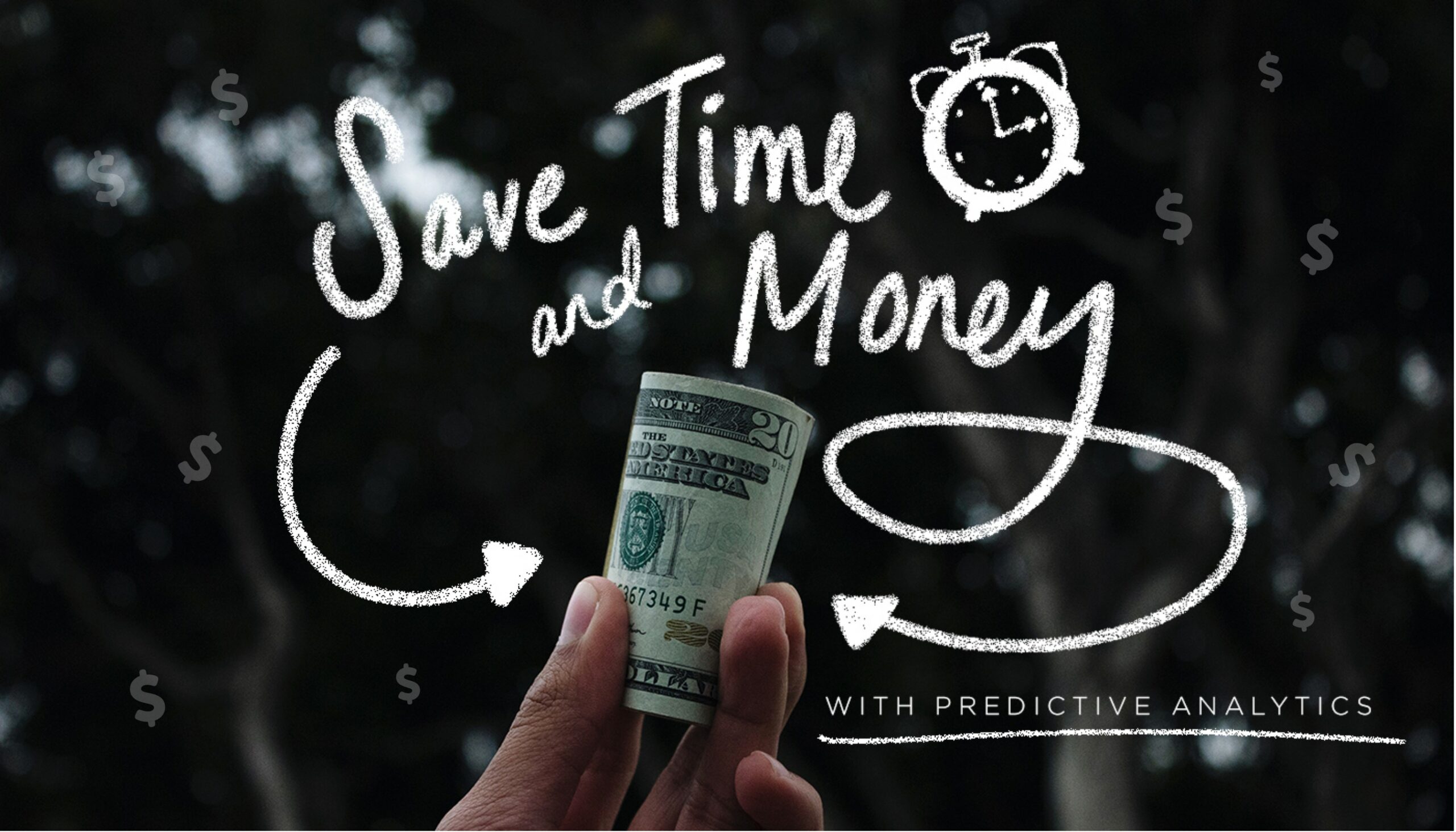
According to Zane Benefits, every time a business replaces a salaried employee, it costs 6 to 9 months of that person’s salary in recruiting and training costs. One way to lessen turnover (as well as save time and money!) is to use predictive analytics in assessing candidates during the hiring process.
Predictive analytics uses data to forecast future results. Forbes explains that companies have used predictive analytics to “predict trends, understand customers, improve business performance, drive strategic decision-making and predict (consumer) behavior”. Companies use this data to increase sales and decide on new products to develop, but they can also use predictive analytics in the hiring process. This type of data is key to understanding the personality traits and behavior profile of a potential employee, ensuring the candidate will be a long-term match for the company.
A study by Cornell University identified what traits should be reviewed using predictive analytics for recruiting executives in particular. They looked at two types of behavior orientations: resource-problem solving oriented and people-oriented. “The research found that the former group was key in predicting initial performance while the latter group was a more accurate predictor of future performance trends.”
In 2012, Wells Fargo started implementing predictive analytics for screening employees prior to hiring. By 2015, they screened over two million people and reported to Predictive Analytics Times that after studying retention rates, “teller retention improved by 15% and personal banker retention improved by 12%”.
While the need for predictive candidate assessments is critical, setting one up from scratch can cost up to $10,000 and take hours to administer! The good news for businesses of all sizes is that technology has evolved so that recruiters and Human Resource Managers can test thousands of people in only fifteen minutes for a small price per month by using a service like Talentobe Manager.
Talentobe can predict an individual’s behavior in the following categories: teamwork, ability to take initiative, management style, ability to handle pressure, reasoning style, communication style, and flexibility. Below is an example of a marketing specialist named Alex. Alex’s assessment shows that stressful situations energize her, and that under pressure, she’ll be motivated rather than put off by challenges.
An employer is never going to change an employee’s personality traits, but behaviors can be taught. Tools like Talentobe’s use objective, psychology-based screenings to provide employers critical information on candidates’ personalities and motivations. In this way recruiters and talent managers can best predict a candidate who will thrive in a particular role, and what training a great candidate might need to fill the gap to ensure long-term success.
Curious about how analytics can save you time? Start your free trial today and use predictive analytics to make smart hiring decisions. And if you like this post, please hit the ❤️ button below or give me a shout on Twitter.
People don’t leave companies they leave managers.

7 Keys to Long Term Employee Happiness
When employees quit, it’s not their company they’ve had enough of, it’s their managers.
Forbes reports from multiple data sources like Gallup and Dale Carnegie that 60–70% of employees are not working to their full potential or engaged with the work they’re doing. That’s a frightening majority! And worse, the cost in lost productivity to U.S. companies is more than $450 billion.
There are reasons beyond the boss relationship that might cause an employee to become disengaged and quit. From personal reasons (Harvard Business Review reports a 16% job hunting spike surrounding when people attend school reunions!) to changes in an organization, like layoffs, which can create insecurity. But the key relationship that will make or break an employee’s success at a company is the one he has with his boss. As Harvard Business Review points out, “in general, people leave their jobs because they don’t like their boss”.
The disengagement numbers are shocking, but it’s also an incredible opportunity to increase productivity through making some positive changes.
- Analyze the flight risk of employees, before they leave. Some companies use an outside firm like Joberate to track who employees are connecting with on social media to predict who might be thinking of leaving.
- Create an open dialogue around motivation and job satisfaction. Conduct “stay” interviews to touch base with employees regularly.
- Get data that delves deeply into a person’s motivations with a tool like the Talentobe Manager.
- Offer internal position openings to employees thinking of leaving. Harvard Business Review highlighted Credit Suisse as using this tactic to reduce attrition of 300 employees and saving the company at least $75 million.
- Give employees more freedom. A study of job satisfaction done by Tiny News showed that “those unfortunate souls whose hands are regularly tied are 28% more likely to think about finding a new employer.”
- Don’t work employees to death. Also according to Tiny News’ research, “employees that are tired and burnt out are 31% more likely to think about looking for a new job”.
- Most importantly: hire the right managers. As Gallup CEO Jim Clifton said, “The single biggest decision you make in your job — bigger than all the rest — is who you name manager. When you name the wrong person manager, nothing fixes that bad decision. Not compensation, not benefits — nothing.”
Every employee is motivated differently, and companies need to know what inspires its team. It’s not correct to assume that a raise or a promotion will always work. In fact, research done by CEB shows that “50% of employees who accept a counteroffer leave within 12 months.” When you know what motivates your employees, using a tool like Talentobe’s, you’ll know best how to keep your talent happily in their seats.
Curious to find out if your employees are happy? Start your free trial today to see if you are motivating your team the right way. And if you like this post, please hit the ❤️ button below or give me a shout on Twitter.
How to Build Team Effectiveness: Bringing Balance by Empowering Management
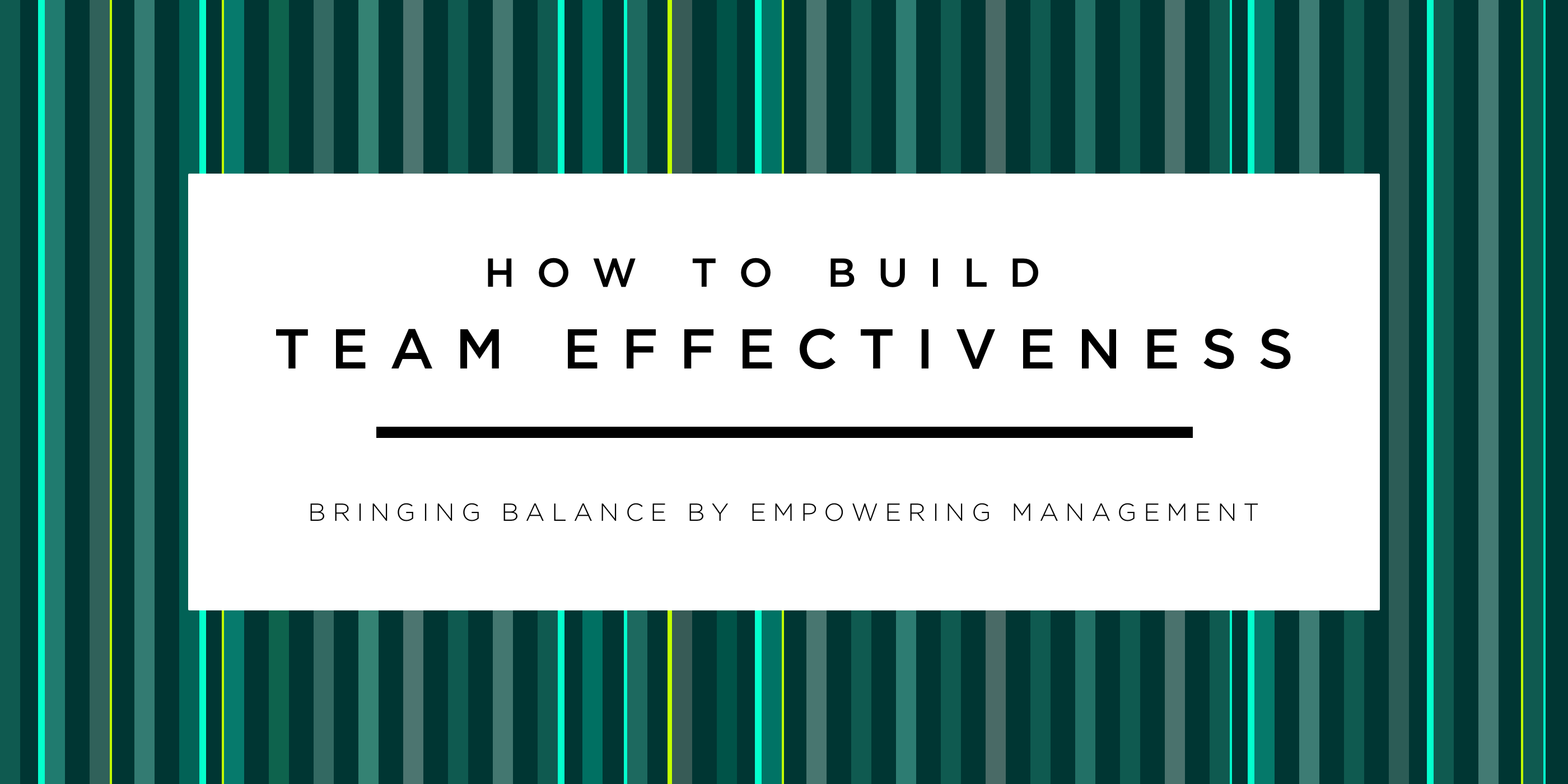
Last week I touched upon the importance of individual self-awareness for team effectiveness in Part 1 of this series, How to Build Team Effectiveness: It starts with the Individual. Today I will shift my attention to leadership within the team, and what managers should strive for when creating a balanced team.
I decided to interview a long-time successful leader, Gino Blefari, CEO of Berkshire Hathaway HomeServices. With 30 years of management experience under his belt and numerous awards in leadership and mentorship, I knew he would have a few nuggets on team effectiveness.
Gino first said that a key to his success in inspiring teams is that he is constantly learning. He is always picking up books and learning new techniques from authors new and old. The books he reads are not just business books, some are fictional novels, others autobiographies, all in which he is able to prune out important takeaways.
When I asked him what makes up a good team he got excited, telling me he had just read The Boys in the Boat, a feel-good story about superstar rowers on a quest to achieve Olympic victory. He said not only was the story incredibly inspirational, but weaved in the keys to a successful team that are applicable to every industry and profession.
“Crew races are not won by clones. They are won by crews, and great crews are carefully balanced blends of both physical abilities and personality types … And capitalizing on diversity is perhaps even more important when it comes to the characters of oarsmen. Good crews are good blends of personalities; someone to lead the charge, someone to hold something in reserve; someone to pick a fight, someone to make peace; someone to think things through, someone to charge ahead without thinking. Somehow all this must mesh. That’s the steepest challenge.”
It goes without saying that every team is different. What makes a team dynamic and productive is having variety. Building on the knowledge of an individual’s skill set, managers can harness their unique skills to build teams with balance. A smart manager knows what to look for but often has little time. Gino & I discussed that his busy schedule has pushed him to make every minute count.
As a manager, it is your job to create an environment that fosters this idea of synergy. Synergy is defined as the interaction or cooperation of two or more individuals to produce a combined effect greater than the sum of their separate effects. When I asked Gino how he achieves this with his teams, he was ready with an answer,
“The closer the team is together, the better the team will perform together. When individuals become accountable to their teammates, that’s when productivity grows exponentially.”
Every time someone new joins his team they are assigned an accountability partner. You are responsible for talking to your partner every day, whether it is a call or an in person meeting. The goal of the call is to get to know your teammate as an individual, aside from work. In a dream world this would happen with every new hire across all companies. But time and expansion can cause managers to cut corners when getting to know their teammates, throwing a wrench in that whole “synergy” thing.
So how can we stay in tune with our employees changing needs especially when we are pressed for time? One option might rely on technology. For instance, Talentobe, a people analytics platform and soft skills personality assessment, allows a manager to become the psychologist who can artfully concoct the perfect blend of personalities to create an effective team.
Similar to Gino’s “accountability partner” idea, Talentobe’s Premium Development Report allows you get an in depth analysis of an individual’s personality traits and motivators in the work place. Everyone is unique and we all have different drives that get us out of bed in the morning. As a manager, having these insights in your back pocket would no doubt give you the information you need to keep your employees engaged.
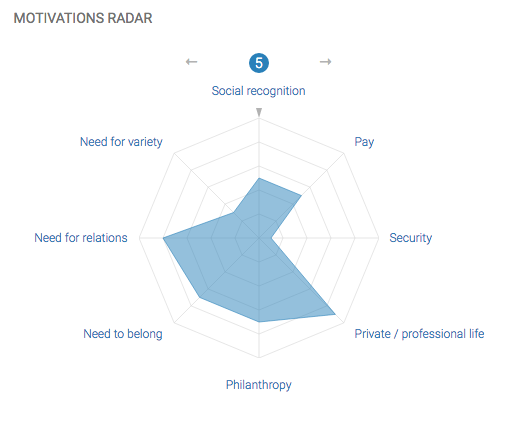
But this idea of getting to know your employee both personally and professionally only works if you have hired the right individual in the first place. Which brings me to my final thought; fostering team effectiveness begins with recruiting the right people. Next week we will take a look at the recruiting process and the important combination of data and intuition when selecting people to join your team.
Curious to find out your professional traits? Check out our page to take your free personality assessment today. And if you like this post, please hit the ❤️ button below or give me a shout on Twitter.
How to Build Team Effectiveness: It starts with the Individual
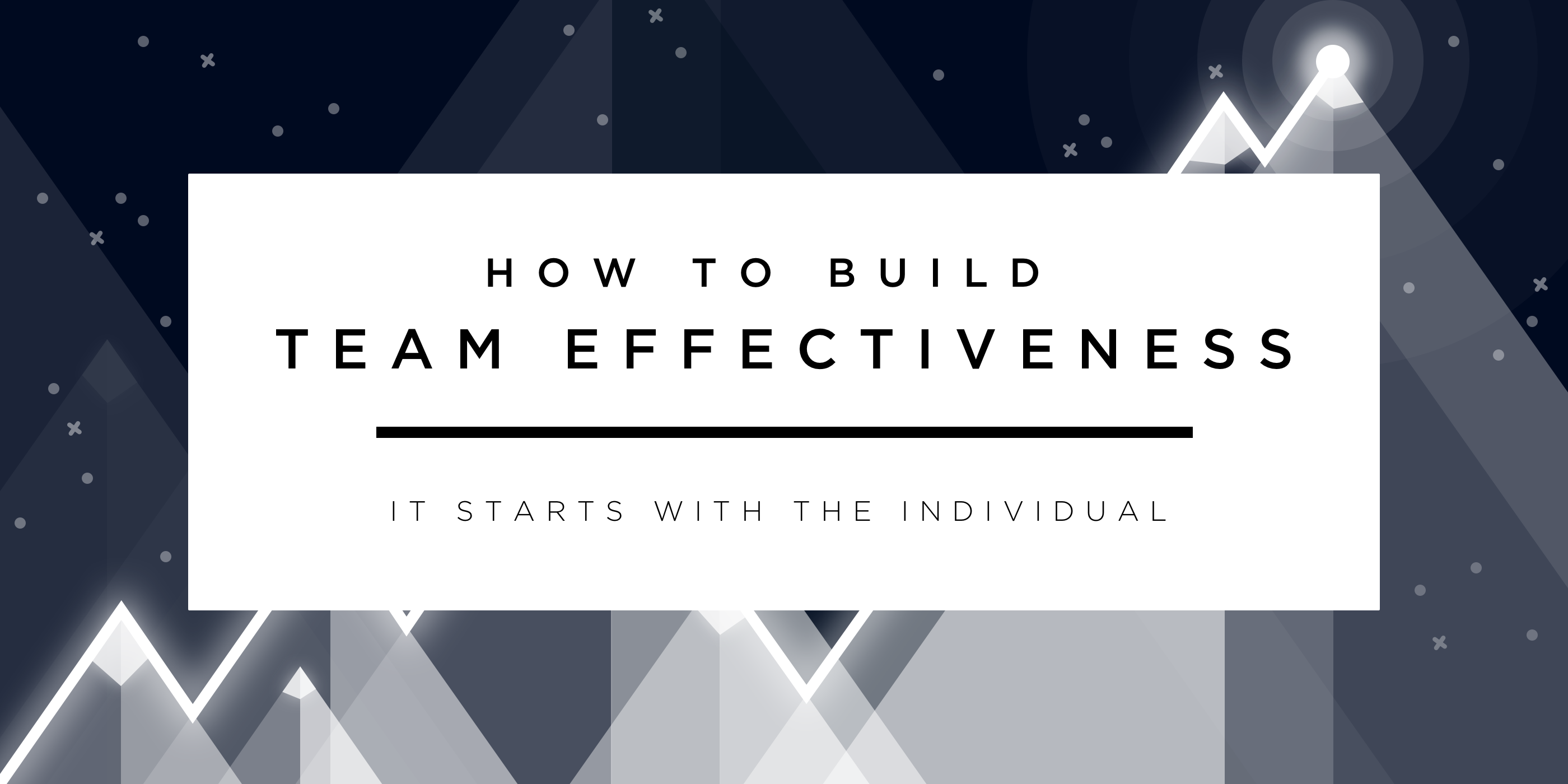
We have been conditioned since we were children to use teamwork. As a toddler you worked with your imagination and your team of playmates to create a different world. Or maybe you worked with your siblings to build the most effective Lego fortress. Learning and productivity and the uniqueness of your work was most likely positively correlated to the ability of you and your teammates, friends, siblings to communicate. You knew your skills and you weren’t afraid to express and utilize them.
Fast forward 20, 30 maybe 40 years and you now know the “best” characteristics to have as a teammate (thanks, Google). It doesn’t matter what your natural skills are, you have read studies about what employers want to hire and you identify with that to make you competitive. You probably believe yourself by now! You alter your skill set for the job. Anyone who has edited their resume for a certain job can relate…
Things are a little backwards right now. A job is open and we try to fit the person in the job instead of fitting the job to the person.
An opening in a team arises and we add someone based on their experience and usually don’t have much of an idea about how they will work on a team besides the characteristics they portrayed from their years of research on what you want to hear. We hire in hopes that they will fit with the team dynamic.
I thought I knew a lot about my natural skill set because I love personality tests. Myers-Briggs, the Enneagram, you name it I have taken it. The thing about these tests is they were putting me in a box again. Fitting me to the type instead of the type to me. My colleague and I have the exact same Myers-Briggs score. We are both ENFJ’s which account for about 5% of the population. The Enneagram also named us both “The Helper”. I can tell you right now if you put us on a team we will not be doing the same job and we both bring very different skills to the table in a team environment.
So we are left with a disconnect of how our personality can help us be effective on a team. How our natural characteristics can transfer into the workplace. It was not until I took this questionnaire that I had clarity on how my personality skills can serve me on a team. I passed the test onto my colleague and was surprised, but then again not, that our results were far from the same.
If you are the individual reading this, it’s time to get honest. Take yourself out of the work equation for a moment and think about what part you play on the team at home, with your friends, or in public. Think of your instinctual skills and try to bring that to your work team. Maybe have a conversation with your manager about how you can bring your skill set to the forefront of your work.
If you are a manager, hold tight! Now that we know the success of the team is built on individual awareness, we can turn our attention to the factors of building the most effective and productive team in Part 2 of How to Build Team Effectiveness: Bringing Balance with Empowering Management.
Curious to find out your professional traits? Check out our page to take your free personality assessment today. And if you like this post, please hit the ❤️ button below or give me a shout on Twitter.
HR Managers are Redefining Merit to Justify Discrimination

Studies show that gender and culturally diverse companies are more successful. This report from McKinsey found that businesses that are gender diverse are 15% more likely to financially outperform homogenous companies, and businesses that are ethnically diverse are 35% more likely to outperform less diverse ones.
Yet, according to this study by Yale researchers, decision makers may downplay the importance of a female applicant’s areas of expertise and inflate the importance of her areas of weakness. Alternatively, decision makers may view the credentials of a specific male applicant as essential to job success and view his areas of weakness as nonessential.
Many companies are trying to improve diversity, or at least claiming they are. Earlier this year, Airbnb announced they assembled a team of civil rights leaders (including the former Attorney General Eric Holder) to review and update the company’s anti-discrimination policies. “I want us to be smart and innovative and to create new tools to prevent discrimination and bias that can be shared…” said co-founder Brian Chesky in this blog post.
Blogger Erica Jones candidly discussed her own experience being the sole black woman on various IT teams, encountering racial bias’ both blatant (degrading comments by coworkers) and clandestine (the company hiring out on a project Jones was the most qualified to do). Jones said,
“I am a black woman who happens to work in the tech industry. I don’t need to change to fit within my industry. My industry needs to change to make everyone feel included and accepted.”
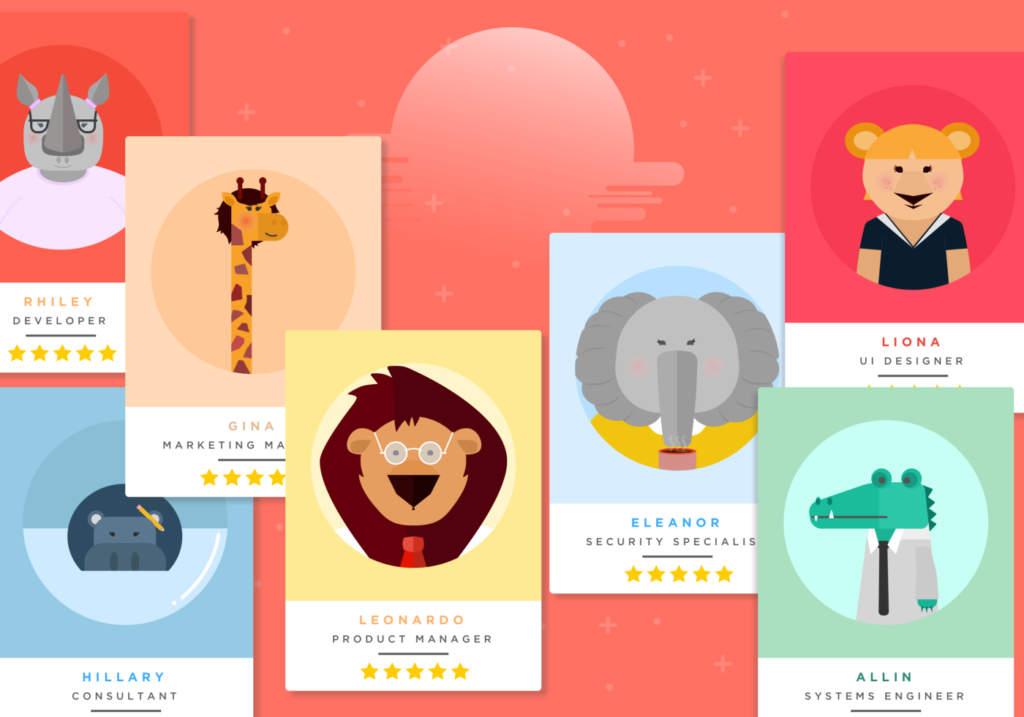
Some companies are making progress on gender diversity. Fortune recently reported that food-delivery company Grubhub has seen success with 50% of its executives being women, 43% of its workforce, and 23% of its engineers (10% more than U.S. average).
Recruiting talent from a larger pool of backgrounds lends itself to a more balanced team. One can see how, in this analysis by Talentobe who reviewed real personality comparisons by country:
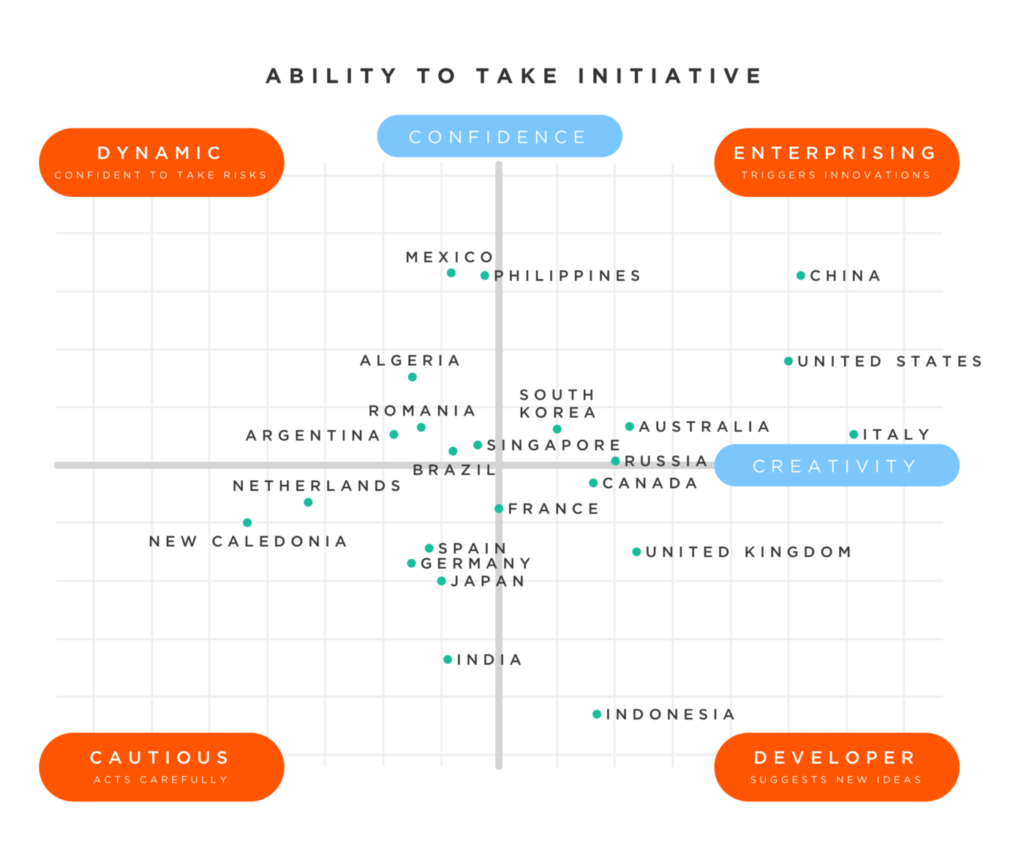
Having a team of dynamic, cautious, enterprising and developer mindsets is ideal — for balanced idea generation and execution. The enterprising person inspires the developer, the dynamic person’s boldness is balanced by the cautious. As the graph above shows, if one only hires people from the U.S. it can be harder to obtain such a diverse team.
Avoiding discrimination bias and fostering a culturally and gender diverse team begins with the hiring manager. Companies who try to do diversity well often make the mistake of casting a wide net initially, but bias’ show up in the final selection. Hiring managers shouldn’t focus on people that are most similar to him or her, but rather aim for as wide of a range of a group as possible. The real problem lies in the bias of the final selection from recruiters and hiring managers.
Disrupting the Bias
One way managers can minimize their bias may be by evaluating the skills of candidates using a personality assessment tool. This gives managers and recruiters an objective way to look at a persons soft skills to create a team that works best together.
But not all tools are created equal. As Nanette Byrnes wrote in this piece on Technology Review,
“the danger remains that unrecognized bias, just in the programming of an algorithm but even in the data flowing into it, could inadvertently turn any program into a discriminator.”
Algorithms must be specifically tailored to minimize the bias, like objective data found in the Talentobe manager that helps reduce the bias of decision makers. Talentobe takes a look at the motivations and personality traits needed to succeed at a given job. Managers can assess their candidates and match the personality results to the industry standard to find the right fit, scientifically.
Another company has taken a different approach. GapJumpers has reworked the hiring process to include blind interviews modeled after the hit TV series The Voice. Cofounder and CEO, Kedar Iyer, states,
“If one industry, especially a shallow one like the music industry, can do [blind auditions], why can’t tech companies, which are so much more scientific, do them?”
GapJumpers found that male applicants raised concerns about having to prove themselves in a blind test more often than women. Once the blind challenge was completed, the gender breakdown of those candidates hired was 58% women, 42% men.
At the end of the day, in order to interrupt the process of judgment the focus must be shifted to evidence and away from perception. We may be a long way from changing human conditioning but companies can adapt with tools to make the hiring playing field less biased.
Check out our page to send our free personality assessment to your potential new hires today. And if you like this post, please hit the ❤️ button below or give me a shout on Twitter.
